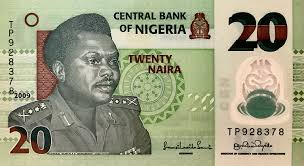Features:
13 February , 2025
Editor : Oni Kehinde
Birth and Family Background
Murtala Ramat Muhammad was a Nigerian Military Officer and the Fourth Head of State of Nigeria born on November 8, 1938, in Kano, Northern Nigeria, into a respected Hausa-Fulani Muslim family. His father, Muhammad Riskuwa, was a trader and a member of the Kano aristocracy, while his mother, Uwani Rahamat, came from a lineage of Islamic scholars. His family’s social standing provided him with opportunities for quality education and exposure to leadership at an early age.
Education
Murtala began his formal education at Cikin Gida Elementary School in Kano before proceeding to Gidan Makama Primary School. He later attended Kano Middle School and then Government (Barewa) College, Zaria, one of the most prestigious secondary schools in Northern Nigeria.
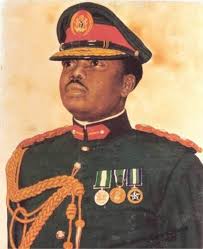
At Barewa College, Murtala was influenced by the values of discipline and leadership. Many of his peers at the college later became key figures in Nigeria’s military and political history. His interest in military service grew during this period, leading him to pursue a career in the armed forces.
Entry into the Nigerian Army
In 1958, at the age of 20, Murtala Muhammad was accepted into the Nigerian Army. He underwent military training at the Regular Officers Special Training School (ROSTS) in Teshie, Ghana, before proceeding to the Royal Military Academy, Sandhurst, United Kingdom. Sandhurst was renowned for training elite officers, and it was here that he honed his leadership, tactical, and strategic skills.
After completing his training, he was commissioned as a Second Lieutenant in 1961 and assigned to the Nigerian Army Signal Corps. His early military career was marked by rapid promotions and assignments that showcased his intelligence, decisiveness, and confidence.
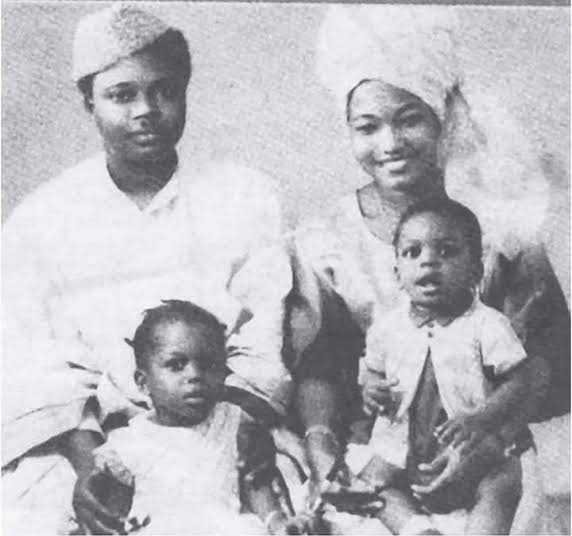
Murtala Muhammad’s upbringing in a traditional, disciplined, and aristocratic environment shaped his leadership style. His education at Barewa College and Sandhurst reinforced his strong sense of nationalism and military discipline. His early military experiences, particularly in communication and logistics, prepared him for more strategic roles in later years.
As he rose through the ranks, he became deeply involved in Nigeria’s military and political affairs, particularly during the turbulent years leading to the Nigerian Civil War (1967–1970). His strong personality, strategic mind, and unwavering commitment to national unity would later define his leadership as Head of State.
Military Life of Murtala Ramat Muhammad
Murtala Ramat Muhammad had a distinguished military career that spanned nearly two decades, marked by his rapid rise in rank, strategic leadership, and significant contributions to Nigeria’s military and political history. His service in the Nigerian Army shaped his legacy as a bold and decisive leader.
Enlistment and Early Military Career (1958–1966)
In 1958, Murtala Muhammad joined the Nigerian Army as an officer cadet.
He trained at the Regular Officers Special Training School (ROSTS) in Teshie, Ghana.
He later attended the Royal Military Academy Sandhurst, United Kingdom, where he specialized in military communications and logistics, becoming part of the Signal Corps.
After completing his training, he was commissioned as a Second Lieutenant in 1961 and posted to the 1st Signal Brigade in Apapa, Lagos.
Key Assignments in the Early Years:
Served as Aide-de-Camp (ADC) to the administrator of the Western Region.
In 1962, promoted to Lieutenant and continued serving in the Signal Corps.
In 1964, he became a Captain and was later promoted to Major, assigned to the Nigerian Army Corps of Signals
Role in the 1966 Military Coups
The year 1966 was a turning point in Nigeria’s military history, with two coups that reshaped the nation’s leadership.
First Coup (January 15, 1966)
A group of young officers led by Major Chukwuma Kaduna Nzeogwu overthrew the civilian government of Prime Minister Abubakar Tafawa Balewa.
The coup resulted in the assassination of several top political and military leaders, including Ahmadu Bello (Premier of Northern Nigeria).
The coup failed, and Major General Johnson Aguiyi-Ironsi took over as Head of State.
Murtala Muhammad opposed this coup, believing it unfairly targeted northern leaders.
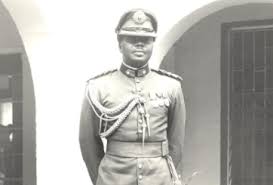
Counter-Coup (July 29, 1966)
In response to the first coup, northern military officers, including Murtala Muhammad, staged a counter-coup.
General Aguiyi-Ironsi was overthrown and killed, and Yakubu Gowon was appointed Head of State.
Murtala was promoted to Lieutenant Colonel and became the Inspector of Signals.
Role in the Nigerian Civil War (1967–1970)
During the Nigerian Civil War (Biafra War), which lasted from 1967 to 1970, Murtala Muhammad played a key role in leading military operations.
Appointed General Officer Commanding (GOC) the 2nd Infantry Division.
Led the Mid-Western invasion, aiming to recapture territory held by Biafran forces.
His forces conducted the controversial Asaba Massacre, where many civilians were killed, a dark chapter in the war.
Though he faced criticism, his leadership contributed to the eventual defeat of Biafra in 1970.
After the war, Murtala was promoted to Brigadier General and appointed Federal Commissioner for Communications, where he modernized Nigeria’s communication infrastructure.
1975 Coup and Rise to Power
By 1975, growing dissatisfaction with General Yakubu Gowon’s leadership led to a military coup.
On July 29, 1975, Murtala Muhammad led a bloodless coup that removed Gowon from power.
He became Head of State and Commander-in-Chief of the Armed Forces of Nigeria.
Promoted to the rank of General and began a series of major reforms in governance, the economy, and the military.
Rise to Power
On July 29, 1975, Murtala Muhammad led a bloodless coup that overthrew General Yakubu Gowon, accusing his government of corruption and lack of progress. Following the coup, he became the Head of State and Commander-in-Chief of the Armed Forces of Nigeria. His administration focused on reforms, economic policies, and anti-corruption efforts.
Key Achievements as Head of State
- Civil Service Reforms – Muhammad introduced policies to improve efficiency and reduce corruption in the public sector.
- State Creation – He restructured Nigeria by creating seven new states, increasing the number from 12 to 19.
- Lagos as Federal Capital – His government initiated the plan to move Nigeria’s capital from Lagos to Abuja for better administrative and security purposes.
- Economic and Industrial Policies – He encouraged Nigerianization of industries and reduced foreign influence in key economic sectors
- Decolonization of Africa – Muhammad was a strong supporter of the anti-apartheid movement in South Africa and supported independence movements in Angola and other African nations.
Family Life of Murtala Ramat Muhammad
Despite his demanding military and political career, Murtala Muhammad maintained a strong connection with his family. He was known to be a devoted husband, loving father, and a disciplined family man.
Murtala Muhammad was married to Ajoke Murtala Muhammad, who remained supportive of his career and played a key role in preserving his legacy after his assassination.
Ajoke was known for her humility, resilience, and dedication to humanitarian causes. After Murtala’s death, she became active in charity work, especially through the Murtala Mohammed Foundation, which focuses on education, healthcare, and women’s empowerment in Nigeria.
Murtala Muhammad and Ajoke had six children, whom they raised with strong values of discipline, education, and service to the nation. His children have maintained a private life, avoiding public political positions, but some have been involved in business and philanthropy.
Murtala was known to be a strict but loving father, instilling discipline and responsibility in his children.
Despite being a military leader, he valued family time and privacy, balancing his national duties with his home life.
He was deeply religious, practicing Islam faithfully, and encouraged his family to uphold moral values.
After his assassination in 1976, Murtala Muhammad’s family, his widow Ajoke, worked to keep his memory alive through:
The Murtala Mohammed Foundation, which promotes national development projects.
Advocacy for good governance and social justice, reflecting Murtala’s values.
Keeping a low profile in politics while contributing to Nigeria’s development in various ways.
Assassination of Murtala Ramat Muhammad
On February 13, 1976, General Murtala Ramat Muhammad, Nigeria’s Head of State, was assassinated in a failed military coup led by Lt. Col. Buka Suka Dimka. His death shocked the nation, as he had been in power for only 200 days and was already implementing major reforms to fight corruption, restructure governance, and strengthen Nigeria’s economy.
Events Leading to the Assassination
By early 1976, some military officers were discontented with Murtala Muhammad’s leadership style. He was seen as:
Too decisive and uncompromising, making rapid changes that affected the military elite.
Targeting corruption and inefficiency, which threatened powerful figures.
Reducing military influence in governance, especially with plans for a return to civilian rule.
Lt. Col. Buka Suka Dimka, who was a member of the Nigerian Army Physical Training Corps, conspired with a group of officers and planned a coup to overthrow Murtala Muhammad’s government.
Around 8:00 AM, General Murtala Muhammad left his residence in Ikoyi, Lagos, for the Dodan Barracks, the seat of government.
Unlike other military leaders, he often traveled without a large security convoy, using a black Mercedes-Benz car with only minimal escort.
At 8:30 AM, as his car reached George Street in Lagos, near the Federal Secretariat, coup plotters ambushed his vehicle.
Armed soldiers opened fire on his car, killing Murtala Muhammad instantly along with his aide-de-camp, Lt. Akintunde Akinsehinwa.
The assassins immediately fled, and chaos erupted in Lagos as the coup attempt unfolded.
Aftermath and Failure of the Coup
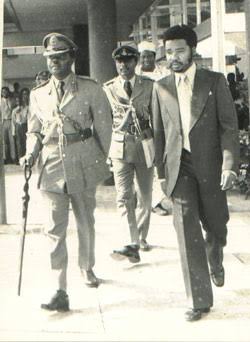
Lt. Col. Dimka announced the coup over Radio Nigeria, claiming to have overthrown the government.
However, the coup failed as senior military officers, including Lt. Gen. Olusegun Obasanjo and Lt. Gen. Theophilus Danjuma, quickly mobilized loyal forces to crush the rebellion.
Within 48 hours, the government had regained full control, and Dimka was on the run.
On March 6, 1976, Buka Suka Dimka was captured, along with other conspirators.
After a military tribunal, Dimka and several others were executed by firing squad.
Legacy of Murtala Muhammad
General Olusegun Obasanjo took over as Head of State, continuing Murtala’s policies, especially the plan to return Nigeria to civilian rule in 1979.
Murtala was buried in Kano, his hometown, with a national day of mourning declared in his honor.
Murtala Muhammad featured on the 20 naira note, his image appears on the front of the polymer #20 note, symbolizing his impact on Nigeria’s governance and reforms.
His assassination shocked Nigeria but also reinforced the country’s commitment to good governance and anti-corruption reforms.
Murtala Muhammed International Airport, Lagos, was named in his honor.
Several roads, institutions, and monuments across Nigeria bear his name.
The Murtala Mohammed Foundation was established to promote his vision for national development.

